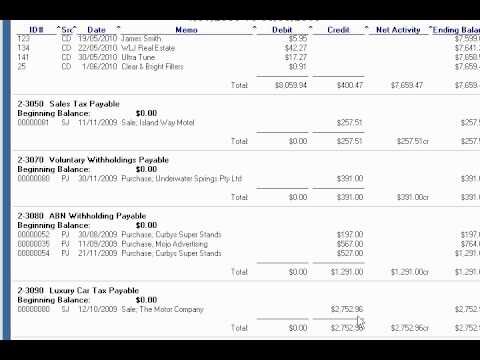Contents:


Former introducing xeros new app marketplace.org staff writer Kylie McQuarrie has been writing for and about small businesses since 2014. Her work has been featured on SCORE.org, G2, and Fairygodboss, among others. Check out our article on bookkeeping basics for small-business owners.

This information may be different than what you see when you visit a financial institution, service provider or specific product’s site. All financial products, shopping products and services are presented without warranty. When evaluating offers, please review the financial institution’s Terms and Conditions.
What are the advantages and disadvantages of double entry bookkeeping?
Single-entry bookkeeping is a simple and straightforward method of bookkeeping in which each transaction is recorded as a single-entry in a journal. This is a cash-based bookkeeping method that tracks incoming and outgoing cash in a journal. With single entries, fraudulent activities become common, and tampering with the record is usual for companies.
- The main purpose of a double-entry bookkeeping system is to ensure that a company’s accounts remain balanced and can be used to depict an accurate picture of the company’s current financial position.
- Double-entry bookkeeping means that a debit entry in one account must be equal to a credit entry in another account to keep the equation balanced.
- To understand how double-entry bookkeeping works, let’s go over a simple example to solidify our understanding.
- Debits are recorded on the left side of the page and credits are recorded on the right.
- There are two columns in each account, with debit entries on the left and credit entries on the right.
- As the business does not have to pay a dividend, there is no liability until there is a dividend declared.
When an employee works for hourly wages, the company’s account Wages Expense is increased and its liability account Wages Payable is increased. When the employee is paid, the account Wages Payable is decreased and Cash is decreased. When a company borrows money from a bank, the company’s asset Cash is increased and the company’s liability Notes Payable or Loans Payable is increased. Double entry also requires that one account be debited and the other account be credited.
Features of Double Entry
This ensures that the financial information provided is accurate and reliable, and facilitates the process of making business decisions based on accurate and reliable financial information. After that, the information from the journals must be combined into the general ledger to create a broader picture of the company’s financial situation. This ledger is then used to compile financial reports such as balance sheets, income statements, and reports on changes in financial position. The amount of money that goes into a debit account and the amount of money that comes out of a credit account must be entered in a journal.
Single-entry accounting is a system where transactions are only recorded once, either as a debit or credit in a single account. The credit entry to dividends payable represents a balance sheet liability. At the date of declaration, the business now has a liability to the shareholders to be settled at a later date. Drawing out a T-account can help you visualize and perfect this debit and credit entry method. As the name suggests, to create this visualization, draw a capital letter T on paper. This will give you room to place the account type at the top of the T while creating a left side and right side for your corresponding debit and credit entries.
He has worked as an accountant and consultant for more than 25 years and has built financial models for all types of industries. He has been the CFO or controller of both small and medium sized companies and has run small businesses of his own. He has been a manager and an auditor with Deloitte, a big 4 accountancy firm, and holds a degree from Loughborough University. The dividend payout ratio is the ratio of dividends to net income, and represents the proportion of net income paid out to equity holders. A business in the process of growing may need the cash to fund expansion, and might be better served by retaining the profits and using the internally generated cash rather than borrowing. The investors in the business understand that they might not receive dividends for a long period of time, but will have invested in the hope that the value of their shares will rise in the future.
Using Accounting Software
Public companies must use the double-entry bookkeeping system and follow any rules and methods outlined by GAAP or IFRS . The exact date that double-entry bookkeeping was invented is not known. There are recorded instances of double-entry bookkeeping from as far back as 70 A.D. A bachelor’s degree in accounting can provide you with the necessary skills to start an entry-level role as an accountant.

The software can reconcile data from different accounts and automate accounting processes. Equity accounts represent the funds invested in a business and the amount of profit left after operation costs, also known as, retained income. Asset accounts represent the resources of a business, such as cash, inventory, and equipment.
Only a single entry recording the income and expenses in a cash register helps maintain the financial information to enable businesses to assess their position. Your accounts must always have the debit amount equal to the credit amount for this method to work. Proper recording of transactions in this way will mean an accurate tracking of cash flow and an overall balanced financial depiction of your small business. For this method to work, you will have to record these entries in the proper financial statements, including your balance sheet and income statement. The two rules of double-entry accounting refer to the systematic recording of transactions using debits and credits.
The importance of bookkeeping for small businesses – TaxAssist Accountants
The importance of bookkeeping for small businesses.
Posted: Thu, 21 Jul 2022 07:00:00 GMT [source]
It has 3 major types, i.e., Transaction Entry, Adjusting Entry, & Closing Entry. If the company pays its monthly rent of $2,000, a credit entry of $2,000 will be recorded in its Cash account and a $2,000 debit entry will be recorded in its Rent Expense account. Double-entry bookkeeping refers to the 500-year-old system in which each financial transaction of a company is recorded with an entry into at least two of its general ledger accounts. In applying this method, every business transaction is recorded in two different accounts. So, this method can make it easier for you to monitor and ensure that the financial information provided is accurate and reliable. Using the double-entry method by entering information about every business transaction into two different accounts will indirectly make it easier for you to track and verify financial information.
Peggy James is an expert in accounting, corporate finance, and personal finance. She is a certified public accountant who owns her own accounting firm, where she serves small businesses, nonprofits, solopreneurs, freelancers, and individuals. If you’re wondering how on earth you keep track of all these accounts, the answer is a chart of accounts, which lists every account in your ledger. And if you’re not sure which accounts you even need, an accountant can steer you in the right direction. Accurate bookkeeping is central to every small business’s success—including yours. Knowing exactly where you stand financially helps you make smart business choices to improve profits while trimming costs.
Examples of Double Entry
This system also simplifies the process of internal and external audits, ensuring that all required financial information is available and easily accessible. This can ensure that the business decision-making process is more efficient and faster, and minimizes the risk of errors or fraud in recording business transactions. As always, we recommend that you go directly to your own accountant, CPA, bookkeeper, business banker, or tax advisor.
Debit vs. Credit: An Accounting Reference Guide (+Examples) – The Motley Fool
Debit vs. Credit: An Accounting Reference Guide (+Examples).
Posted: Wed, 18 May 2022 16:53:51 GMT [source]
For example, Apple representing nearly $200 billion in cash & cash equivalents in its balance sheet is an accounting transaction. When a company pays a six-month insurance premium, the company’s asset Cash is decreased and its asset Prepaid Insurance is increased. Each month, one-sixth of the premium is recorded as Insurance Expense and the balance in Prepaid Insurance is reduced. The system might sound like double the work, but it paints a more complete picture of how money is moving through your business. And nowadays, accounting software manages a large portion of the process behind the scenes. Requiring more time and effort is a weakness that you will feel when applying this method in bookkeeping.
This means that determining the financial position of a business is dependent on the use of double entry accounting. The company’s asset account Cash is increased with a debit entry of $10,000 and the company’s liability account Loans Payable is increased with a credit entry of $10,000. The accuracy of the double-entry accounting method is based on the principle that every business transaction must be recorded in two different accounts. This ensures that every business transaction is properly recorded and minimizes errors or fraud in the accounting process. At any point in time, an accountant can produce a trial balance, which is a listing of each account and its current balance. The total debits and credits on the trial balance will be equal to one another.

Your https://bookkeeping-reviews.com/ are balanced when the sum of each debit and its corresponding credit equals zero. Contrary to single-entry accounting, which tracks only revenue and expenses, double-entry accounting tracks assets, liabilities and equity, too. In accounting, a debit refers to an entry on the left side of an account ledger, and credit refers to an entry on the right side of an account ledger. To be in balance, the total of debits and credits for a transaction must be equal.
The entry is a debit of $8,000 to the cash account and a credit of $8,000 to the common stock account. You buy $1,000 of goods with the intention of later selling them to a third party. The entry is a debit to the inventory account and a credit to the cash account. DebitDebit represents either an increase in a company’s expenses or a decline in its revenue.
